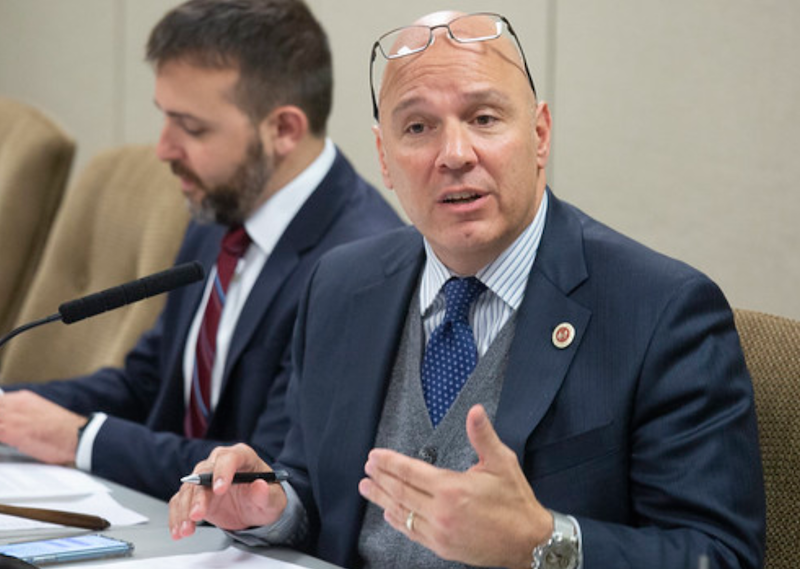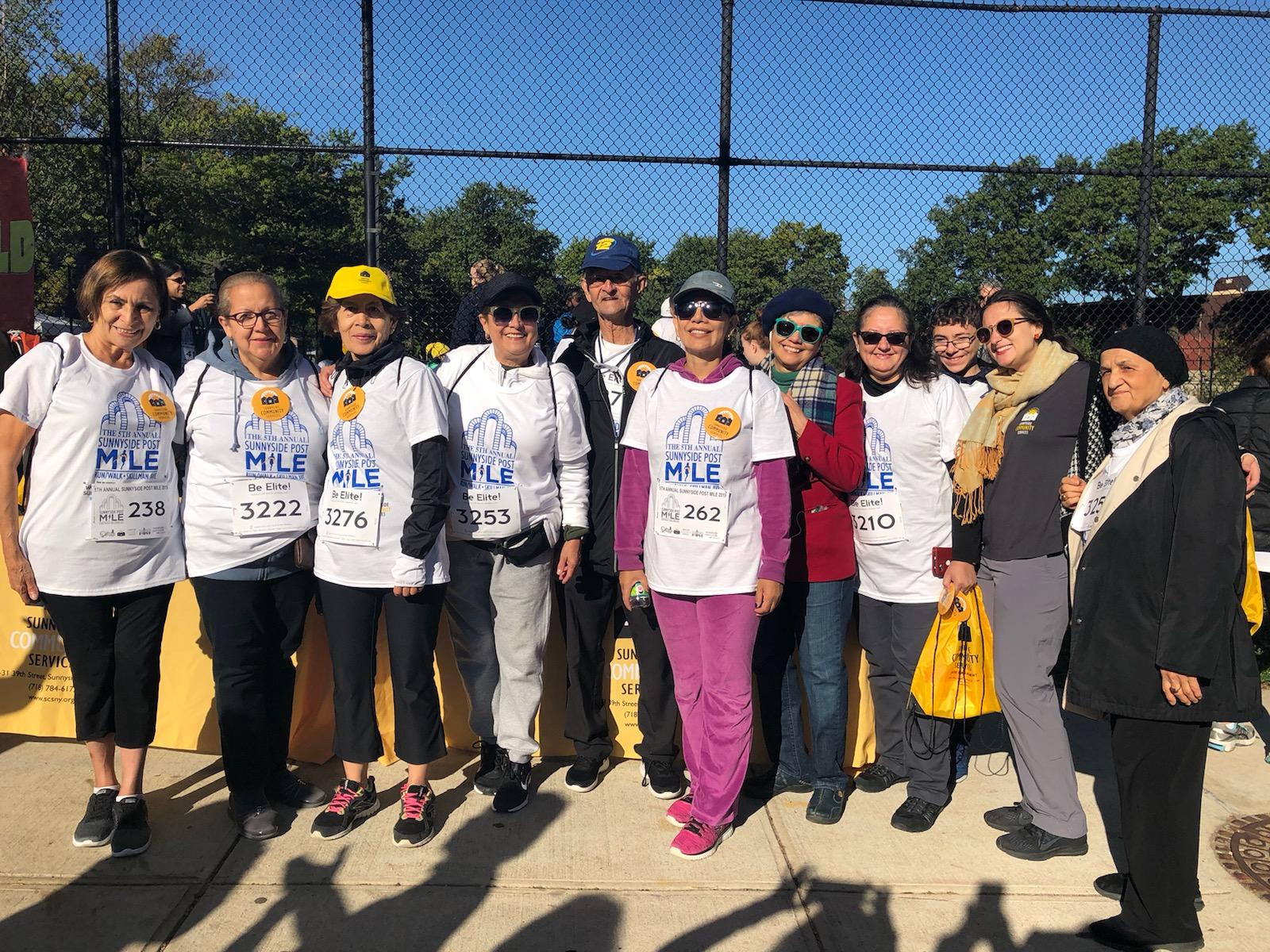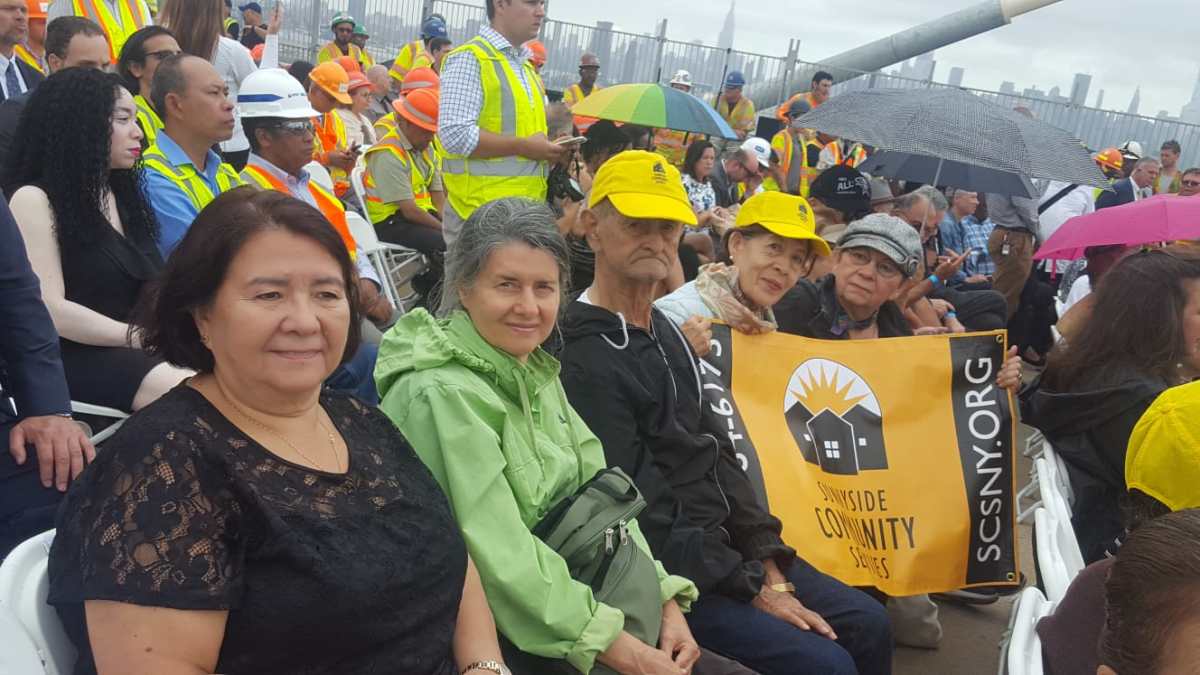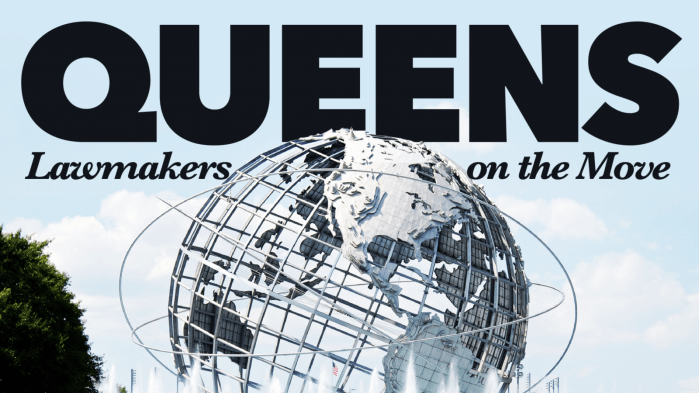Kerly Serrano was able to hold it together while she translated for the woman on the other end of the phone, a senior living alone while a pandemic ravaged her neighborhood. But when she heard the woman, Amparo Portero, 72, explain how much the calls from the Sunnyside Community Services Senior Center meant to her, she broke down.
“It means somebody cares for her,” said Serrano, the director of the senior center, choking back tears while translating Portero’s statement into English.
Portero said that from the start of the pandemic, staff at SCS have called her regularly asking if she needs medicine, help getting to a doctor or more meals.
Originally from Ecuador, Portero lives alone in Sunnyside and has no family in the city. Ever since she’s had to hunker down in her home so as to not contract COVID-19, SCS has been her lifeline, she said.
“How are you and do you need anything?” Portero said they’d call to ask. “I really appreciate that.”
But now, the lifeline that Portero and thousands of other seniors throughout the center rely on is in danger as senior service providers face government budget cuts and mounting uncertainty about the full effects of the COVID-19 pandemic, advocates and senior service providers said.
Last month, the New York City Council voted on a Fiscal year 2021 spending plan that slashed the New York City Department for the Aging’s budget across the board. There was a 12 percent decrease to the Council Senior Services Initiatives from last year which included the zeroing out of the more than $1 million in Borough President’s Discretionary DFTA Funding.

City Councilmember Paul Vallone (D-Auburndale, Bay Terrace, Bayside, Beechhurst, College Point, Douglaston, Flushing, Little Neck, Malba, Whitestone), the only Queens council member on the New York City Council’s Committee for the Aging, said that protecting vulnerable elderly New Yorkers was a priority despite the cuts.
“While unfortunately no agency was spared from cuts in this year’s difficult budget, I was proud to advocate for and secure $5.1M in funding for the Support Our Seniors initiative, which I established in 2015 and provides each Council Member funding to support senior services citywide at their discretion,” he said.
Another $15 million promised by the mayor in 2017 for the 2021 budget were also dropped, $10 million of which was supposed to go towards senior centers and $5 million towards funding their kitchen staff.
The city funding cuts coupled with uncertainty over future funding at the state and federal level leaves organizations like SCS in the lurch as they struggle to meet the increasing demands from seniors for mental health, meals and other services while they are stuck at home because of the ongoing public health crisis.
“It’s so hard to project and to anticipate exactly what will happen which is why our goal is just to remain as involved in the budgetary process as possible and to ensure that older adults have their voices heard,” said said Katelyn Andrews, the director of Public Policy at LiveOn NY, an organization that champions policies that support seniors and senior service providers.
Andrews said that organizations like SCS which already operate on shoestring budgets, could still face more cuts on the state level and if revenues continue to drop, there could be even more cuts state and citywide, Andrews said. On a more positive note, however, there could be federal stimulus money, she said.
This budgetary uncertainty makes it difficult for the organizations on the ground, many of which rely heavily on government money, to plan ahead –– especially when they don’t know the full extent of the needs of the seniors they work with, said Judith Zangwill, the executive director of SCS, the organization that runs the senior center that Portero relies on.
SCS is around 90% funded by the government, of which approximately 60% comes from the state.
“There will be some services that we may not be able to provide,” Zangwill said about the effects of the decreased funding. “In some cases we won’t be able to serve as many people.”
The pandemic required SCS to adapt quickly, she said. In the first five weeks of the pandemic they fielded more than 1000 calls from seniors looking for help. Normally, they would receive around 200 calls in the same time period. The immediate increase in demand was surprising but that they were able to respond quickly and reassign staff to help field the calls, she said.
Many of the seniors called for help navigating various bureaucracies such as signing up for food deliveries or getting access to mental health counseling. Others had more specific needs. One woman needed cat food. She’d run out, and was feeding some of her delivered meals to her cat instead of eating them herself. Another woman called because she needed advice about taking care of her father, a senior citizen who’d tested positive for COVID-19 and was coming home from the hospital to finish his recovery.
They’ve tried their hardest to help elderly residents in need but she worries that the true extent of the pandemic’s damage will be revealed as the city starts to open up, she said, especially when it comes to mental health needs. Social isolation –– when a senior is cut off from services, and community and therefore more at risk of loneliness and depression–– was a huge issue before the pandemic and is only worse now. What the needs will be like once seniors feel safe enough to leave their houses and seek help in person is yet to be seen.
“I’m very concerned about what will be revealed once things are closer to what they were,” said Zangwill about the city reopening.
In the past, SCS’s contract with DFTA has depended on how many people they were providing in-person services to at the center, said Monica Guzman, the associate executive director of Development at SCS. How those contracts are going to be decided upon now with most services being provided remotely and the centers still closed down is still unknown, she said. And, what happens once in-person services are allowed to resume is also up in the air.
“There’s just so much unknown. It’s just uncharted territory for everyone,” Guzman said.

Portero said many of her friends are depressed and lonely from being stuck at home. She tries to lead by example to get them to develop a routine during the pandemic, such as committing to showering and putting on different clothing each day, but without the center as somewhere to go, it’s difficult to motivate them.
Instead, they text each other on WhatsApp about how much they miss going to the senior center.
“Everyone says, ‘When can we return?’” she said in Spanish.
Portero’s worried about the funding cuts. If the Sunnyside Community Services Center had to cut back on staff, or programming, or if it couldn’t reopen, she’s not sure what she’d do. It’s the place where she goes to eat lunch with her friends, to get some exercise and dance Zumba, and to get help with mundane tasks such as translating mail she’s recieved from English to Spanish she said.
“It will affect us a lot,” she said about the center’s future. “Not only me but so many people. The center is a second home for so many of us.”
But for now, Portero is stuck alone in her first home in Sunnyside where the farthest she said she walks each week are the few steps it takes her to take out the trash. There she’ll wait until she can start going back to her second home at SCS –– whenever it opens and with whatever amount of programming and services it can afford.
.














